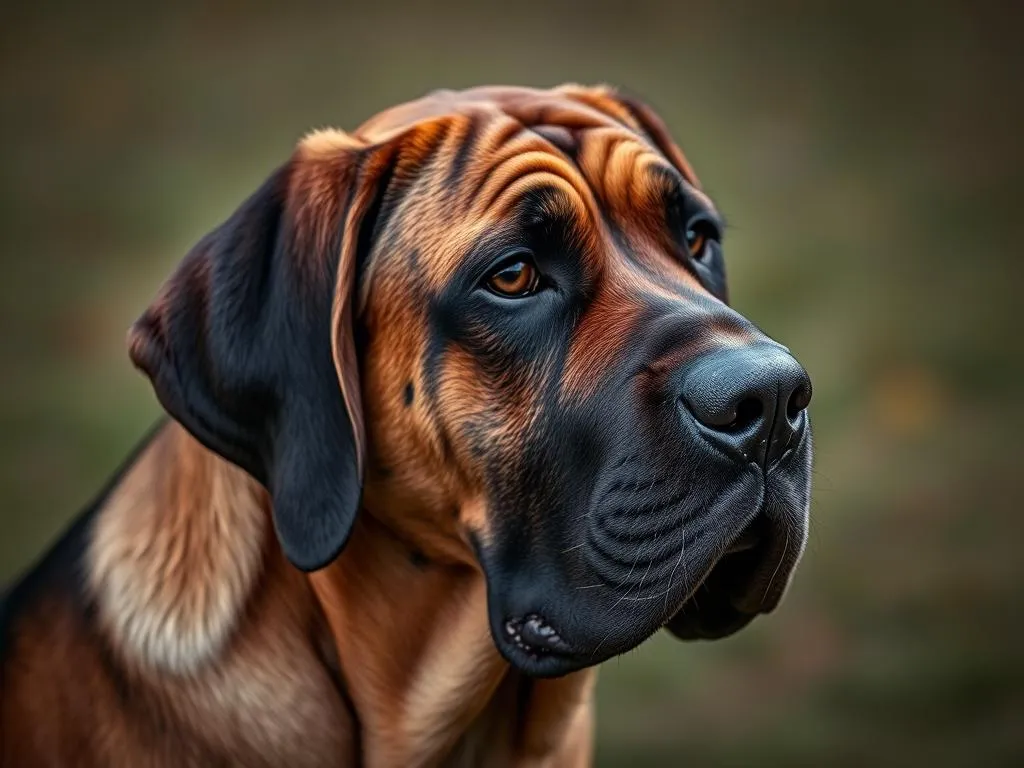
Introduction
Mixed breed dogs have gained immense popularity over the years, offering unique combinations of traits from their parent breeds. Understanding the specific characteristics of these hybrid dogs is essential for potential owners. Among these intriguing mixes is the Mastiff Bloodhound mix, a unique hybrid that combines the loyal nature of the Mastiff with the incredible tracking abilities of the Bloodhound. This article delves into the intricacies of this mix, providing valuable insights into its parent breeds, physical traits, temperament, health considerations, training, and care.
Understanding the Parent Breeds
Mastiff
Origin and History
The Mastiff is one of the oldest breeds known to man, with a history that dates back over 5,000 years. Originating from ancient civilizations such as the Mesopotamians, these dogs were bred for various purposes, including guarding homes and properties, hunting large game, and serving as war dogs. Their formidable presence and strength have made them reliable protectors throughout history.
Physical Characteristics
Mastiffs are known for their massive size and imposing stature. Adult Mastiffs typically weigh between 120 to 230 pounds and stand about 27 to 30 inches tall at the shoulder. They have a short, dense coat that comes in various colors, including fawn, brindle, and apricot. Their distinctive features include a broad head, powerful jaws, and a muscular build.
Temperament and Personality Traits
Mastiffs are renowned for their gentle and affectionate nature, especially towards their families. They are calm, loyal, and protective, making them excellent family pets. While they can be wary of strangers, they are generally good with children, showcasing a playful side. Their laid-back demeanor often means they prefer lounging around the house to excessive activity.
Health Issues
As with any breed, Mastiffs are prone to specific health issues. Common ailments include hip dysplasia, elbow dysplasia, and certain heart conditions. Their lifespan averages 10 to 12 years, and prospective owners should be aware of the care considerations, such as maintaining a healthy weight and regular veterinary check-ups.
Bloodhound
Origin and History
The Bloodhound boasts a rich history as a scent-tracking dog, believed to have originated in medieval Europe. They were initially bred for hunting and tracking game, especially deer and wild boar. Their incredible sense of smell has made them invaluable in search and rescue operations, law enforcement, and tracking down lost individuals.
Physical Characteristics
Bloodhounds are medium to large-sized dogs, typically weighing between 80 to 110 pounds and standing about 23 to 27 inches tall. They are easily recognizable by their long, droopy ears, wrinkled skin, and expressive, soulful eyes. Their short coat is typically red or black and tan, with a smooth texture that requires minimal grooming.
Temperament and Personality Traits
The Bloodhound is known for its friendly and affectionate personality. They are excellent with children and tend to get along well with other pets. However, due to their strong instincts and independent nature, they require proper training and socialization from an early age to ensure they develop into well-mannered companions.
Health Issues
Bloodhounds can be susceptible to certain health issues, including hip dysplasia, ear infections due to their floppy ears, and various skin conditions. Their average lifespan is around 10 to 12 years, and they require regular veterinary care to maintain their health and well-being.
The Mastiff Bloodhound Mix
Physical Characteristics
The Mastiff Bloodhound mix inherits a fascinating blend of features from its parent breeds. Size-wise, you can expect this mix to be large, usually weighing between 90 to 150 pounds. They stand anywhere from 24 to 30 inches tall, depending on which parent they take after more.
The coat type can vary, often combining the short, dense fur of the Mastiff with the smoother texture of the Bloodhound. Colors can range from fawn and brindle to a mix of red and black and tan, resulting in a unique appearance for each individual dog.
Temperament and Personality
The temperament of the Mastiff Bloodhound mix is a delightful combination of both parent breeds. Generally, they are affectionate, loyal, and gentle, reflecting the Mastiff’s nurturing side. However, they also possess the inquisitive nature and playfulness of the Bloodhound, making them versatile companions.
Socialization is crucial for this mix, as they may inherit the Mastiff’s protective instincts and the Bloodhound’s independent streak. Early training and consistent socialization will help manage these traits, ensuring your dog becomes a well-rounded member of the family.
Health Considerations
Health considerations for the Mastiff Bloodhound mix can include a range of inherited conditions from both parent breeds. Some common health issues include hip dysplasia, obesity, and heart problems. Regular veterinary check-ups and a balanced diet are essential for maintaining their health.
The lifespan of this mix generally ranges from 10 to 12 years, similar to both of its parent breeds. Responsible breeding practices and proper care can help mitigate some health risks, providing your dog with a better quality of life.
Training and Socialization
Training Needs
Training a Mastiff Bloodhound mix requires patience and consistency. Early training and socialization are vital for developing a well-behaved dog. Positive reinforcement methods, such as treats and praise, work best with this mix, as they respond well to encouragement.
Challenges may arise due to their independent nature, particularly if they inherit the Bloodhound’s stubbornness. It is essential to establish clear boundaries and commands to ensure your mix understands expectations. Regular training sessions, combined with socialization opportunities, will help them adapt to various situations and environments.
Socialization Tips
Socializing a Mastiff Bloodhound mix involves exposing them to different people, pets, and environments from a young age. Introduce them to various settings, such as parks, busy streets, and homes with other pets. This exposure helps reduce anxiety and promotes confidence in new situations.
Creating positive experiences during socialization is crucial. Use treats and praise to reward good behavior when meeting new people or pets. Gradually increase the level of stimulation and challenges, allowing your dog to adapt at their own pace.
Exercise and Activity Requirements
The Mastiff Bloodhound mix has moderate exercise needs, combining the Mastiff’s more laid-back nature with the Bloodhound’s playful spirit. Regular exercise is essential to maintain a healthy weight and prevent boredom, which can lead to destructive behaviors.
Daily walks, playtime in the yard, and activities like fetch or agility training are excellent ways to keep your mix active. Aim for at least 60 minutes of exercise each day, adjusting the intensity based on your dog’s energy levels and preferences.
Nutrition and Diet
Nutritional needs for a Mastiff Bloodhound mix vary based on their size and activity level. A high-quality diet rich in protein, healthy fats, and essential vitamins and minerals is crucial for their overall health.
Consider a balanced diet that includes dry kibble, raw food, or homemade meals, depending on your preferences and your dog’s needs. Be cautious of feeding them table scraps or excessive treats, as this can lead to obesity—a common concern in both parent breeds.
Common dietary issues may arise, including food allergies or sensitivities. Regularly monitor your dog’s health and consult your veterinarian if you notice any signs of dietary distress, such as itching, gastrointestinal upset, or unusual behavior.
Living Arrangements
When considering living arrangements for a Mastiff Bloodhound mix, a spacious home with a yard is ideal. While they can adapt to apartment living, it requires a commitment to providing ample exercise and stimulation.
Ensure your living space is dog-friendly, with enough room for them to move around comfortably. Create a designated area for their bed and toys, providing a sense of security and belonging. Consider fencing your yard, as this mix may have a tendency to wander if left unsupervised.
Conclusion
The Mastiff Bloodhound mix embodies a unique blend of traits from its parent breeds, offering a loyal, affectionate companion with a playful spirit. Understanding the characteristics, training needs, exercise requirements, and health considerations of this mix is essential for prospective owners. While they present joys and challenges, the rewards of owning such a distinctive hybrid are immeasurable.
Frequently Asked Questions (FAQs)
-
What is the temperament of the Mastiff Bloodhound mix?
The mix is generally affectionate, loyal, and gentle, but may also be independent and stubborn. -
How much exercise does a Mastiff Bloodhound mix need?
Aim for at least 60 minutes of exercise each day, including walks, playtime, and mental stimulation. -
What are common health issues for this mix?
Potential health issues include hip dysplasia, obesity, and heart problems. -
Are Mastiff Bloodhound mixes good with children?
Yes, they are typically gentle and protective, making them suitable companions for families with children. -
How should I socialize my Mastiff Bloodhound mix?
Introduce them to various environments, people, and pets early on, using positive reinforcement to encourage good behavior.
With proper care, training, and love, a Mastiff Bloodhound mix can be a fantastic addition to any family, bringing joy and companionship into your life.









